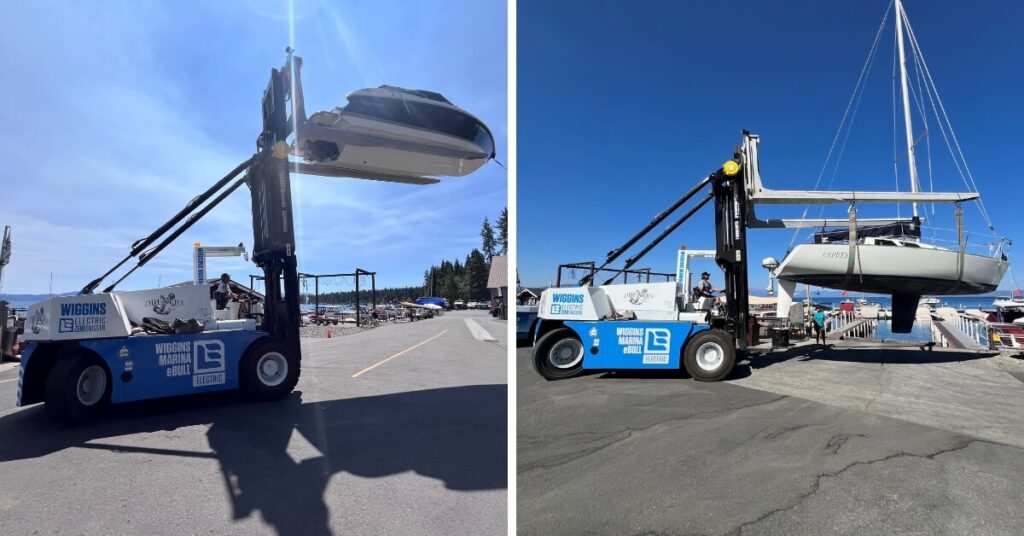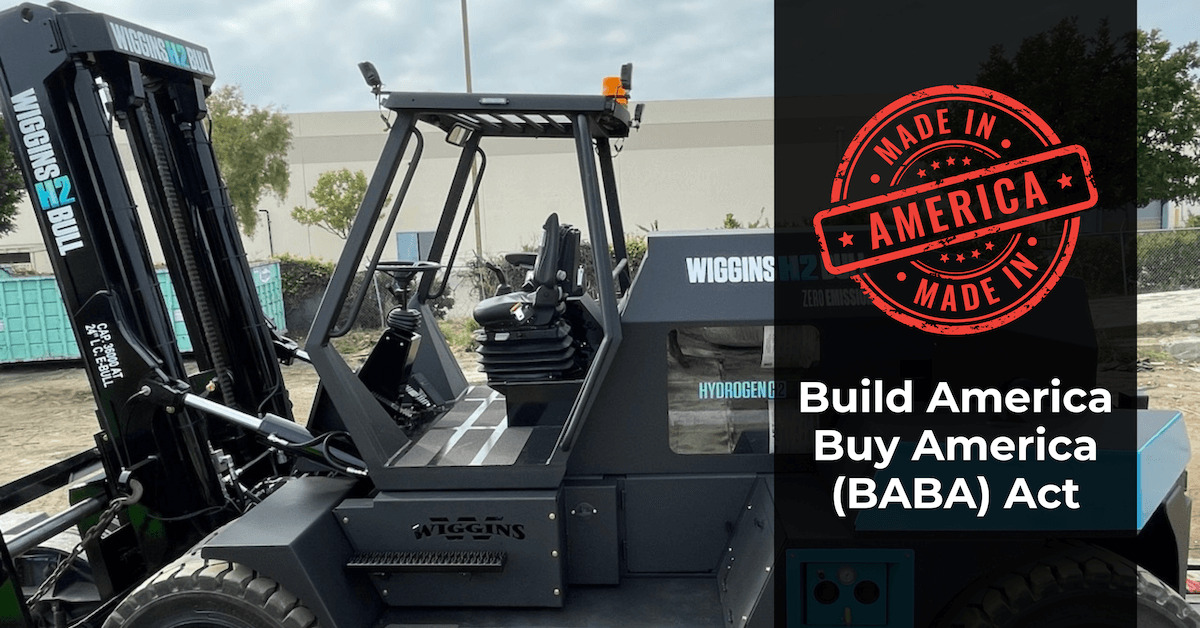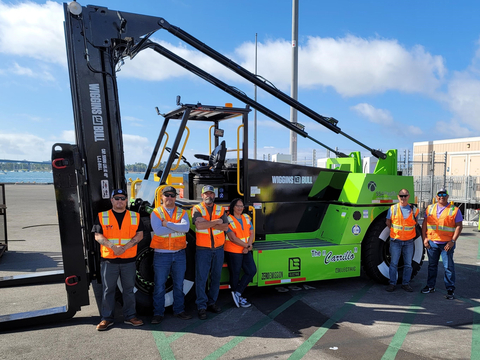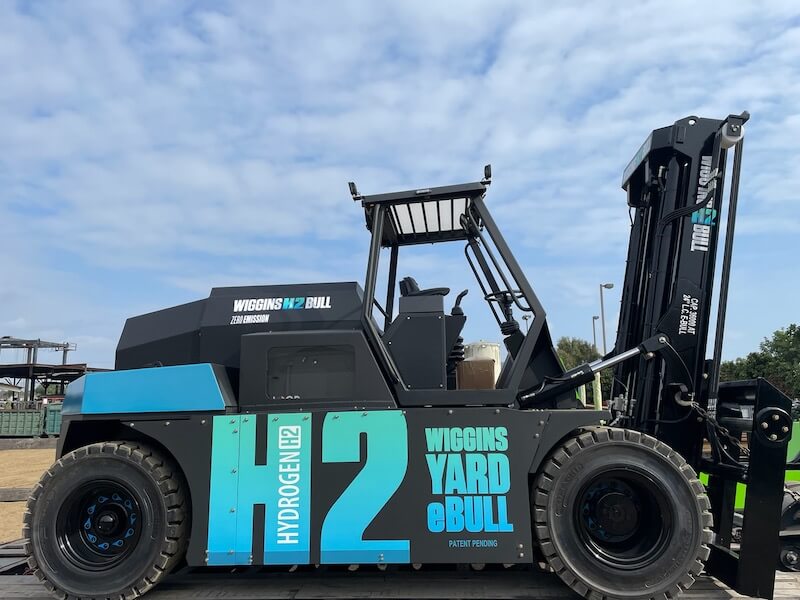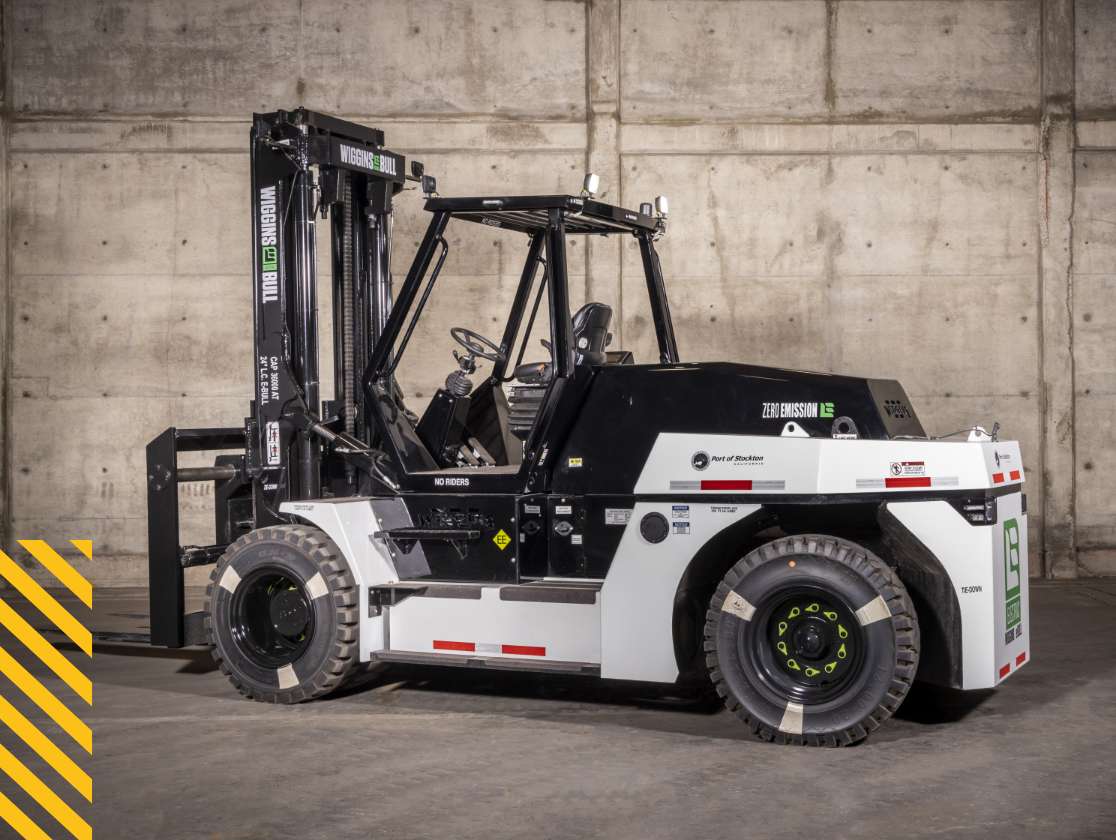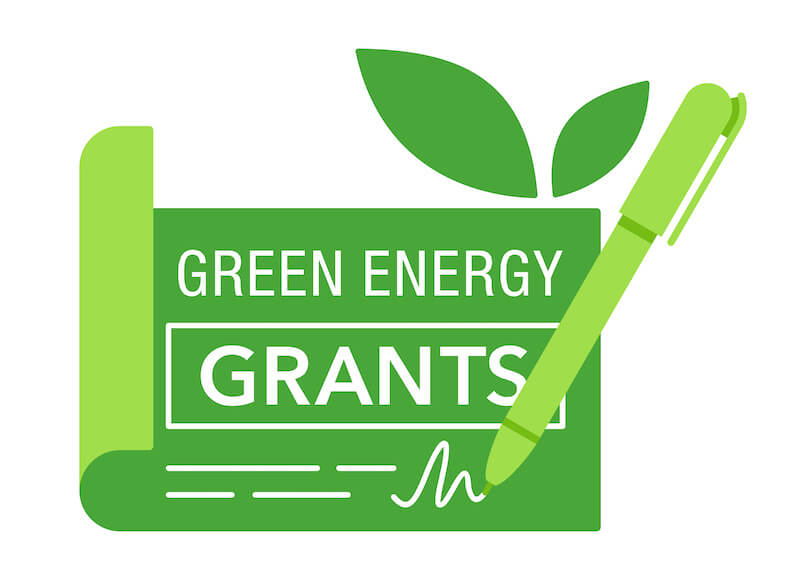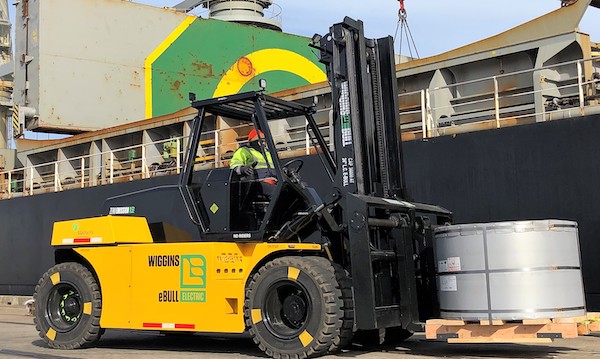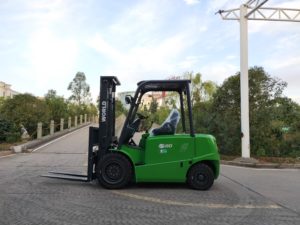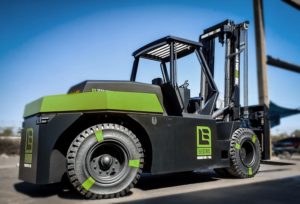Hydrogen Combustion vs. Hydrogen Fuel Cell vs. Lithium-ion Forklifts: Key Differences
As the transportation and heavy equipment industries strive to reduce emissions and increase efficiency, hydrogen has emerged as a promising clean energy source, especially for heavy equipment, where the need to balance power, efficiency and zero emissions comes into play
To that end, two main technologies are leading the charge in hydrogen: hydrogen combustion engines and hydrogen fuel cells. Of course, lithium batteries are still a major source of zero-emission equipment, but as we explore within this article, are limited when it comes to generating enough power required for large scale needs such as those needed in port operations.
In the sections below, we’ll explore the most important differences between these technologies, when each is typically used, and how a next-generation approach combines the best of both worlds for high-capacity operations.
Hydrogen Combustion vs. Hydrogen Fuel Cell – Understanding the Differences
At their core, hydrogen combustion engines and hydrogen fuel cells share a common goal: to use hydrogen as a zero-emission fuel. However, the way they harness this energy is different.
Here are the key differences you need to know:
Hydrogen Combustion Engines
These engines operate much like traditional internal combustion engines, but instead of burning gasoline or diesel, they burn hydrogen. The result is the same mechanical power output seen in diesel or gas engines, but with fewer emissions. However, emissions are still a concern with this technology, particularly nitrogen oxide (NOx) emissions.
Hydrogen combustion is known for its ability to generate high torque and power, so it’s often used for applications that require heavy lifting or sustained high loads. Construction, freight, and off-road equipment, are all use cases where the demand for substantial torque is critical.
These engines can also utilize lower-grade hydrogen, which may be advantageous in settings that are transitioning away from fossil fuels but have not yet secured a supply of high-purity hydrogen.
However, the environmental impact and the tightening of emission standards are prompting a reevaluation of their use. As a result, industries are encouraged to consider cleaner alternatives, such as hydrogen fuel cells or lithium-ion systems.
Hydrogen Fuel Cells
In contrast, hydrogen fuel cells produce electricity by combining hydrogen with oxygen in a chemical reaction, without combustion. This electricity is used to power an electric motor, similar to battery-electric vehicles.
Hydrogen fuel cells are highly efficient at both lower and higher loads and excel in applications where steady, prolonged operation is required. Unlike combustion engines, fuel cells produce zero NOx emissions, with water vapor being the only byproduct. Hydrogen fuel cell technology is also able to power heavy lifting and sustained high loads.
Despite its advantages, the current cost of pure hydrogen makes fuel cells an expensive alternative to hydrogen combustion. These costs, coupled with infrastructure issues, make a pure-hydrogen approach too cost-prohibitive to adopt right now.
Lithium-ion Batteries
Known for their high-energy density and long life span, lithium-ion batteries power everything from small electronics to large electric vehicles and are increasingly used in heavy machinery. Unlike hydrogen fuel cells and hydrogen combustion engines, lithium-ion batteries store electrical energy directly and deliver it efficiently, making them ideal for a variety of applications.
One major advantage is their rapid charging capability and high-energy efficiency, which are essential for high-demand industrial environments. These batteries provide consistent power output, which is crucial for equipment requiring steady, reliable energy, such as forklifts and other material handling vehicles.
Lithium-ion batteries also operate cleanly, producing no emissions at the point of use, which significantly reduces the carbon footprint of the operations they power.
Introducing Zero-Emission Hybrids: The Next Generation of Heavy-Duty Solutions
While both hydrogen combustion engines and fuel cells have their advantages, heavy industries often face the challenge of needing high power for large loads while striving for greater energy efficiency and reduced emissions.
This is where Zero-Emission Hybrid, or ZE Hybrid, system comes into play.
Zero-Emission Hybrid (Patent Pending) technology, used by XL Lifts and Wiggins, combines the best features of both hydrogen fuel cells and lithium technology, offering a cutting-edge solution for heavy lifting and industrial applications.
We dubbed it “Zero-Emission Hybrid” as unlike traditional hybrids, which typically blend internal combustion engines with batteries and still emit harmful emissions, Zero-Emission Hybrid integrates hydrogen fuel cells with lithium battery technology to provide unmatched power, efficiency, and sustainability – without emitting any NOx
Here’s why Zero-Emission Hybrid stands out:
- Power to Handle Big Loads: By utilizing hydrogen fuel cells alongside lithium batteries, Zero-Emission Hybrid offers the torque and power needed for high-capacity operations, such as lifting large boats or managing heavy cargo loads. This hybrid approach ensures that even the heaviest equipment can be operated with ease, without sacrificing the environment.
- Increased Efficiency: With the fuel cell delivering power for steady-state operations and the lithium battery providing peak power when needed, Zero-Emission Hybrid offers an optimized balance between power output and energy efficiency. This dual-technology system ensures that operators can maintain high performance and get “the best of both worlds” from both hydrogen and lithium.
- Zero-Emissions with High Performance: By leveraging hydrogen as the primary fuel source, Zero-Emission Hybrid drastically reduces emissions compared to traditional internal combustion engines. Additionally, the hybrid system ensures cleaner energy consumption, contributing to a reduction in the overall carbon footprint of industrial operations.
- Lower Operating Costs: One of the standout features of the Zero-Emission Hybrid system is its lower hydrogen requirements compared to traditional hydrogen-only systems. This efficiency reduces the frequency and volume of hydrogen refueling, significantly cutting operational costs over time. This makes the Zero-Emission Hybrid not only a leader in performance but also in cost-effectiveness.
A Solution for the Future
As industries continue seeking greener and more efficient ways to power their heavy-duty operations, technologies like Zero-Emission Hybrids represent the future.
With the combined power of hydrogen fuel cells and lithium technology, XL Lifts and Wiggins are pushing the boundaries of what’s possible in the world of zero-emission industrial equipment.
Whether you’re in construction, logistics, or any industry where heavy lifting and sustainability intersect, the future of hydrogen-powered equipment has arrived. For more information on how Zero-Emission Hybrid can transform your operations, contact XL Lifts today or check if you qualify for CORE funding to help make the switch to clean technology.



